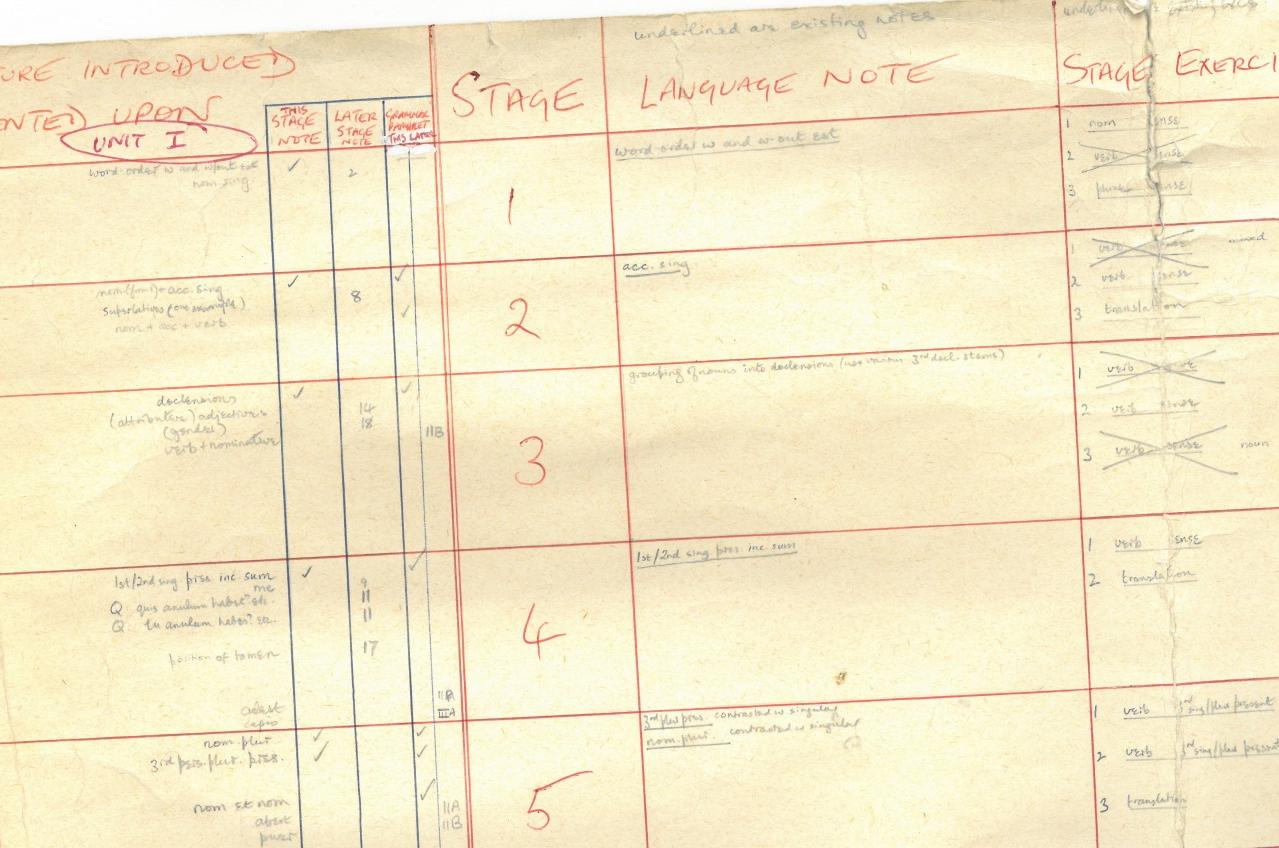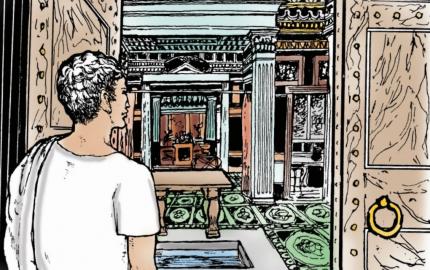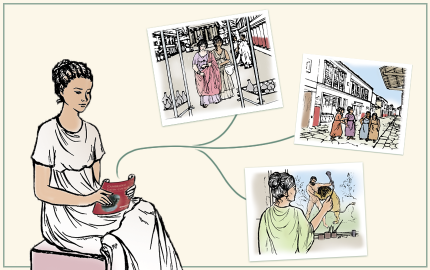As part of our series on the CLC: Past and Present, Anna Karsten reflects on the role her father, David Karsten, played in the early history of the Cambridge Latin Course and the reasons the CLC continues to be much loved in the Classics classroom today.

Submitted by Anonymous on Tue, 11/01/2022 - 13:43
David Karsten's notes on the pilot of the Cambridge Latin Course
My first encounter with the Cambridge Latin Course was at the beginning of 3rd form (what we would now call year 9) when I began learning Latin at school. Back then it was still in individual booklets for each stage and the Book I stages were orange with only line drawings or black and white photos. When we later moved onto Book IIA in year 10 and all four stages were in one book it felt like you were moving on to more serious Latin and that was somehow part of growing up! I also used to see the green Book III sitting in my dad’s office and it held out the promise of more to come.
And yes, my dad was my Latin teacher. What I didn’t realise at that point is how he had been involved in the pilots for the CLC. What I did know was that he was a good teacher and that he embraced new teaching methods and new ideas in teaching if he could see the benefits for his pupils. He knew that a reading course worked and he knew that CLC was a great learning tool. Later when I decided to go into teaching he talked to me more about it. He spoke fondly of Pat Story under whom he had done his DipEd at Oxford.
After he died my mum went through many of his things, which had been put in the loft or a cupboard for safe-keeping. In amongst those papers she found materials from the pilots with his scribblings at the side, ready to feed back to Pat and her team. It was fascinating to see those materials and notice the differences that there were and think about the changes that were made: vocabulary that was changed, different emphases to About the Language sections. But also you can see what hasn’t changed. There at the heart of it are those strong storylines and characters that are so integral to the course. This is, after all, a reading course, and a reading course needs a story that captures the imagination.
What these materials reveal as well is that the input of practising teachers has always been at the heart of what the CLC has produced. Teachers in classrooms are the ones who need to have confidence that these books work and that young people are engaging with them in their learning. So many of us have had the privilege of commenting on and inputting into the development of the UK 5th edition but this time in digital form. The evolution in our practise once again being shown by the juxtaposition of the two forms of reflection – my father’s hand written notes, and our digital commenting via the online Cambridge Latin Community panel.
The longevity of this textbook lies in the fact that it is a tried and tested method of teaching that classroom practitioners have validated and which has enthralled their pupils to the point that “Caecilius est in horto” is a much-loved rallying cry for many and that people always have their favorite character. I know that my pupils are enjoying it when they start surmising about characters and creating additional stories for them. With this new edition we are seeing the introduction of some new characters who will soon become embedded in the consciousness of future generations of Latin learners. They will open a world of wonder and excitement that will ignite a love of the Classical world that so many before them have enjoyed.
Cambridge School Classics Project








